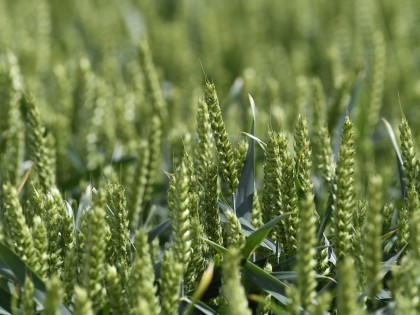
In his column for the spring 2023 edition of NIAB Landmark, CEO Professor Mario Caccamo reflects on the Genetic Technology (Precision Breeding) Bill becoming law and the opportunities this now gives.
On 23 March 2023 the Genetic Technology (Precision Breeding) Bill was given Royal Assent, becoming an Act of the UK’s Parliament. This is one of the first times we have seen new legislation seeking to enable, rather than restrict, the use of advanced genetic technologies for agriculture and food production in England.
This Bill takes technologies that are more precise than traditional crop breeding out of the scope of GMO regulation, enabling the use of genome editing to fast track the development of crops that will help us to meet the demands for resource-efficiency and climate-ready varieties.
As recently put by Rory Riggs, a US pioneer crop biotechnologist, the development of precision breeding “is almost an analog-to-digital moment for a new breeding industry”. At NIAB we have supported the passage of this Bill through Parliament as we believe this is great new tool for the breeders’ toolkit.
I was therefore pleased to see that the BBC came to NIAB to announce this milestone; we have invested in the development of new genetics tools to support breeders and scientists, and some of our more recent buildings have been specially designed to enable the delivery of this type of tools.
As we face the global challenges associated with climate change and feeding a growing population, the continued access to genetic innovation in plant breeding will be one of the most important tools in helping us move forward.
The spring 2023 issue of NIAB's Landmark magazine is, for instance, focused on the work we do to improve legume genetic resources. We all agree that grain legumes for both animal feed and human consumption will need to have a more prevalent role in the UK crop rotations.
Articles in this issue explain in detail how legume crops such as peas, beans and soy offer many benefits, including the ability to fix nitrogen and the opportunity to enhance the human diet with plant protein products.

Throughout history we have seen dramatic improvements in agricultural productivity through advances in crop rotation, improved farming techniques, the development of crop protection products and the availability of fertilisers.
Precision breeding techniques open a door to expanding our capabilities in plant protein genetics. More broadly, the adaptation of plants to climate change can also be accelerated with precision breeding technologies such as gene editing.As an example, it is well known that roots with steeper angles support plants that can access moisture at deeper levels. This is a key trait in crops that can maintain high yields in periods of drought.
Gene editing can be used to help us understand the underlying molecular mechanisms controlling root growth and architecture. This could allow us to select crops that can still be successful in hotter conditions such as those seen in summer 2022 across Europe; almost no rain was recorded in June and July, and temperatures above 40°C were reached for the first time in several northern countries.
We are very excited about the breadth of the application of precision breeding. Its relatively low cost has contributed to the democratisation of the technology which will be a catalyst for innovation and attracting private investment. It is therefore important that innovators, breeders and growers are confident that the use of gene editing in the development of improved crops will not be penalised due to unjustifiable stringent and disproportionate near-market requirements.
It is clear that the risks from gene edited crops are no greater than from conventionally bred ones. In the context of the new legislation, we should recognise the safety record delivered by the current rules governing plant breeding and the approval of new varieties. Approaches that combine biotechnology with traditional breeding, new data-intensive tools and agronomic expertise will be needed to design, implement and deploy novel crops.
As the new Act is implemented, law-makers and regulators will feel the responsibility to ensure the benefit can be fully realised by enabling not only research but a route to market. A proportionate and science-led approach to regulation of genetic technologies in agriculture is a critical piece in the jigsaw to ensure we can continue to feed the world whilst protecting the environment.
This article originally appeared in the Spring 2023 edition of NIAB’s Landmark magazine. Landmark features in-depth technical articles on all aspects of NIAB crop research, comment and advice. You can sign up for free and get Landmark delivered to your door or inbox:
